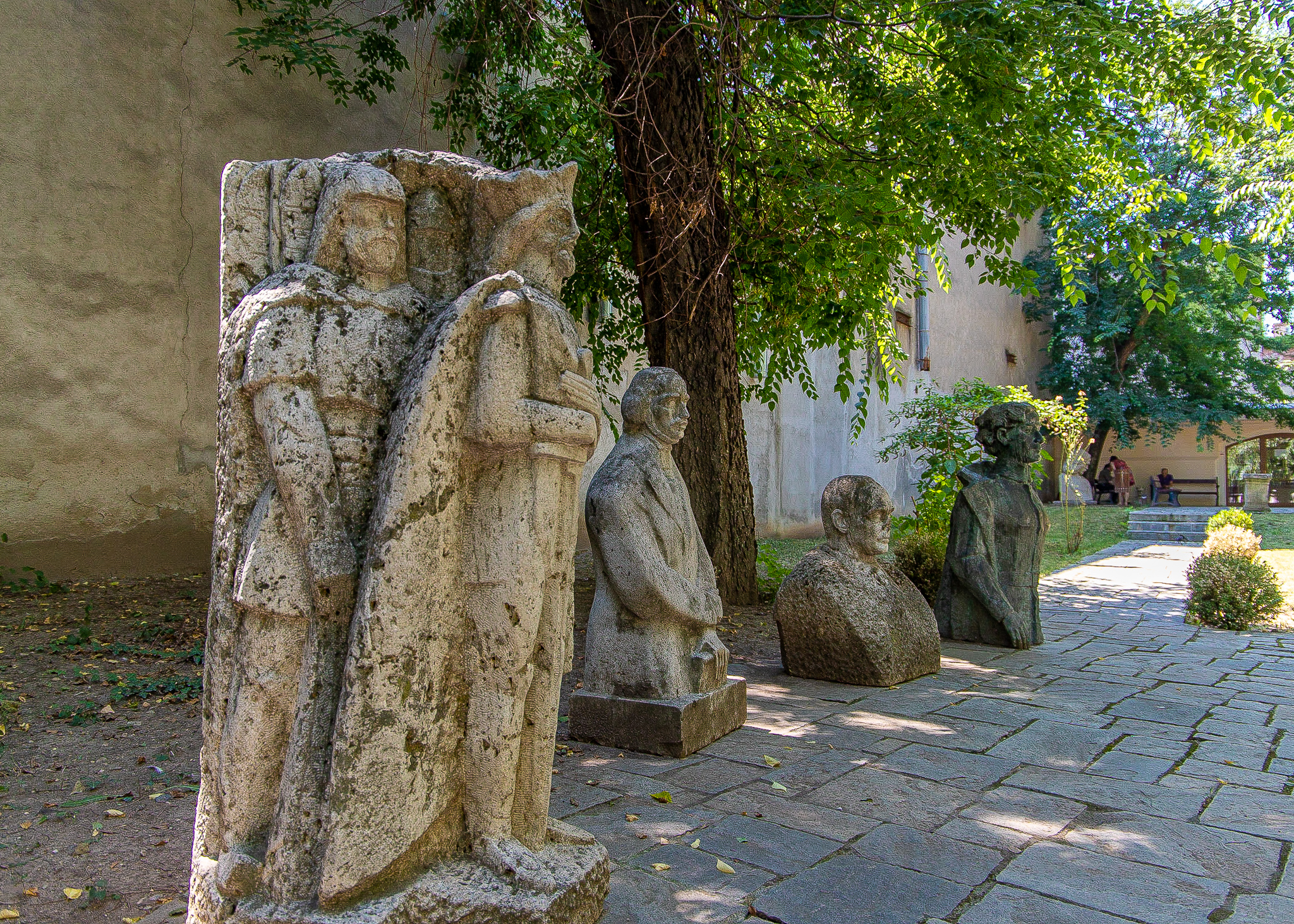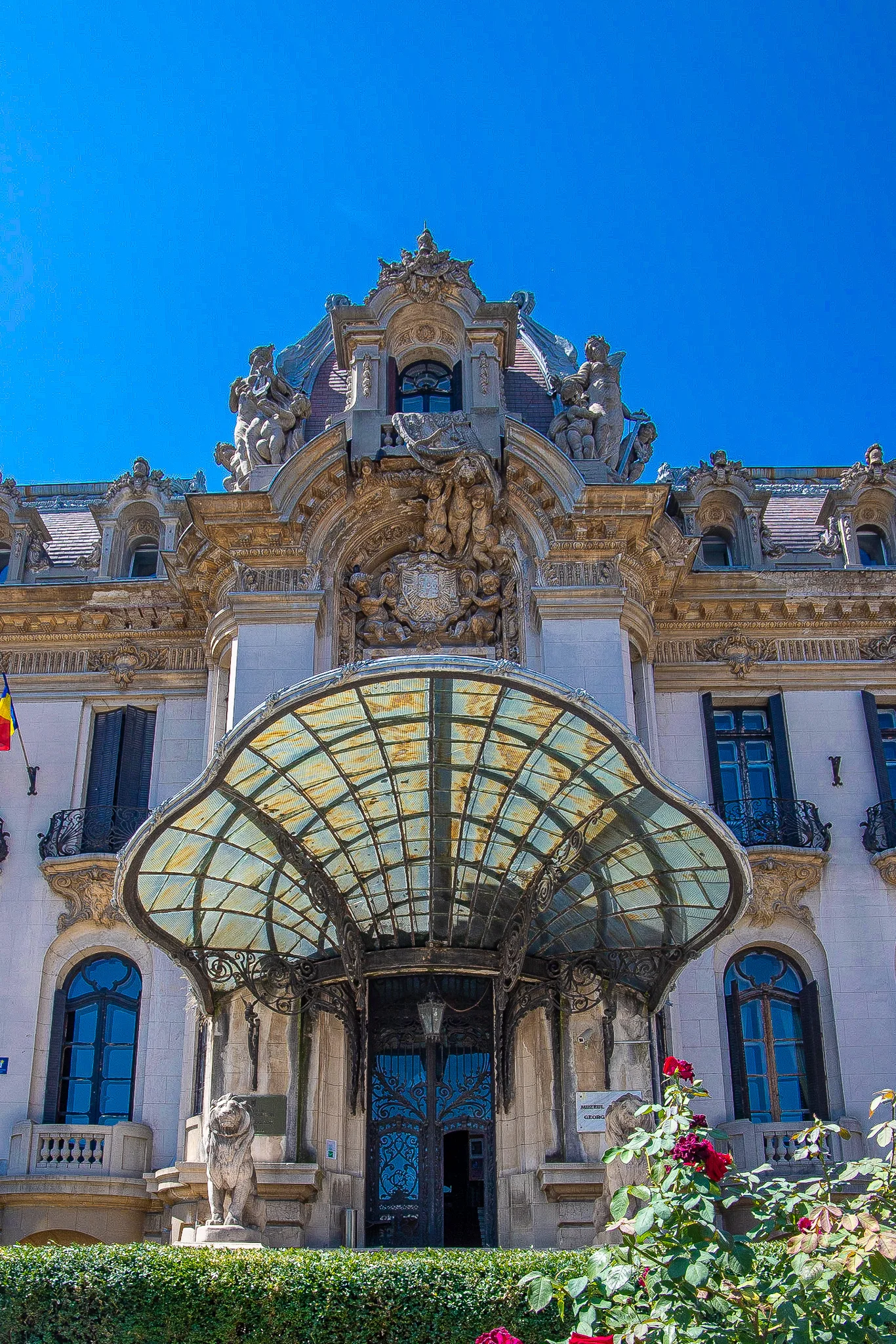We’ve blasted down the trainway from Brasov to Bucharest, a city first mentioned in 1459 as one of the residences of our old friend Vlad, ruler of Wallachia, who was responsible for growing the city to a decent size when he made it the preferred site of the Wallachian court. And while folk legend has it that a shepherd, Bucur, founded the city, it is more commonly believed that Radu Voda initially established it in the late 13th century AD, making this a relatively new city.
Bucharest flourished during the reign of Romania’s first king, Carol I in the late 18th century AD. During the 1920s and 1930s is was also considered one of Europe’s most architecturally avant-garde cities, when a large number of art deco buildings were built. A lot of these are still in existence today, but a 1977 earthquake detroyed a large number of buildings giving President Nicolae Ceausescu the opportunity to remodel the city in his own vision. As a result the city now is a mish mash of pleasant and extremely unpleasant buildings, most of the latter being massive in size, probably to make up for the Romanian leaders own diminutive stature.
None come bigger than the The Palace of the Parliament, which is the world's largest civilian building with an administrative function and second largest administration building in the world after the Pentagon. Construction began in 1983 and by the time of the Romanian Revolution in 1989, when Ceausescu was killed, the building still wasn’t finished. Today, only 400 chambers and 2 large halls can be used, out of the 1,100 rooms spread over 20 floors across 365,000 square metres. In a time when a lot of Romanians were destitute, the building ended up being the world’s most expensive administrative building, costing 3 billion Euro to build, as well as its heaviest.
A meglomaniac’s dream
Ceausescu’s legacy of building big still lives on today. Tucked in behind the Parliament Building is the People’s Salvation Cathedral. Scheduled for completion in 2024, it has been designed to be the tallest Orthodox church in the world, with a height of 125 metres and able to seat 7,000 worshipers. The Church’s construction has constantly courted controversy, as its cost continues to grow and it is now estimated to be 400 million Euro, most of which is paid by taxpayers in a country that can hardly be considered wealthy.
People’s Salvation Cathedral
Up close view of the cathedral
Of more modest size is the Triumphal Arch (Arcul de Trimf) which was built to commemorate Romania’s victory in the First World War and the 1918 Great Union of Romania when Transylvania, Banat, Crisana, Maramures, Bessarabia, and Bukovina joined with the Kingdom of Romania to form one national state. The Arch is, of course, modelled on the Arc de Triomphe in Paris, as a hat tilt to the city having once been called Little Paris. With a height of 26 metres there are internal stairs that provide views back to the city.
The Triumphal Arch
Bucharest has over 60 museums and memorial houses spread all over the city which would take years to fully explore. Situated near Piaţa Victoriei on the way from the city centre to the Triumphal Arch is a trio of some of the best. The first is the Grigore Antipa Museum of Natural History which was purpose built in 1908 to house the thousands of exhibits that are guaranteed to interest visitors for at least a couple of hours.
National History Museum
One hundred metres up the road is the wonderful red brick ethnographic Museum of the Romanian Peasant, that was built in 1912. Anything you wanted to know about life in the Romanian countryside over the past four centuries can be found here.
Museum of the Romanian Peasant
Directly across the road is the National Geology Musuem. Another beautiful building, the museum hosts a wide range of mineral, stone and paleontological collections, as well as resconstructions of dinosaurs discovered in the Hateg region, about 50 kilometres west of Sibiu.
National Geology Museum
If you’re not museumed, out the Filipescu Cesianu House has a nice array of sculptures outside, as well as what is supposed to be a good display inside the museum of 300 years of urban history focusing on family, childhood and private life.
Filipescu Cesianu House
Historic figures from Romania’s past
The thinkers
Having checked out the sculptures, I noticed there was also a statue of Vlad the Impaler outside the museum’s entrance.
Vlad III
One hundred metres down the road is the George Enescu National Museum, which is dedicated to the life and works of the great Romanian composer. The museum is worth visiting solely for the amazing French Baroque/Art Nouveau style palace that was built in 1905.
George Enescu National Museum
By this stage I certainly was museumed out and it was time to collect my thoughts on this intriguing city and start afresh the next day.












